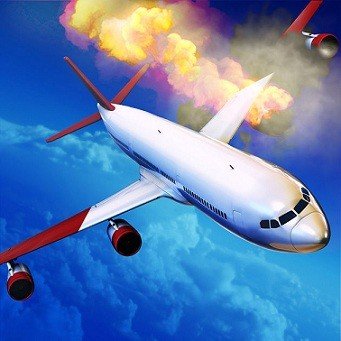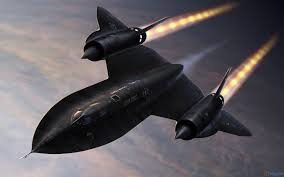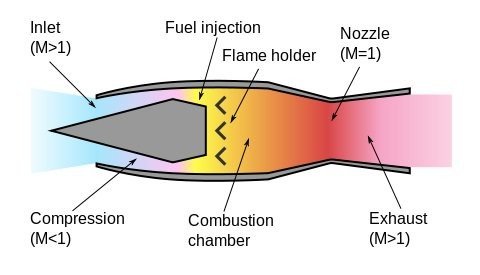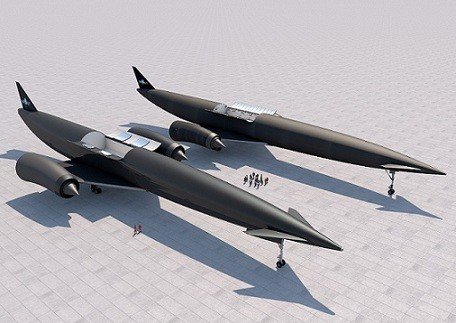Why It Is Impossible To Fly An Aeroplane Right Into Space. (Aerodynamics Busted)
Have you ever stopped to ask yourself; “What stops an aeroplane from flying higher and higher until it sees space?” There are many issues we would be considering. Just fasten your seat belts as I take you through some of these details.
The first issue we’d be considering is the air, or lack of it as we approach the space. It is worthy to note that, when airplane flies; the wings make the airflow to become faster, which in turn creates the required lift for the airplane. So as the plane goes faster, the wings create more lift. And as the lift is created, there’s an upthrust that sends the plane higher.
But as the plane gets higher into the atmosphere, the air becomes less dense. So the plane will have to increase its speed faster to further create some more lift. A further push in this will cause the plane to get to an altitude where air becomes too thin to create more lift, and the engine ceases to function properly because of lack of oxygen.
Remember this; just as humans need air to survive, the engines also require oxygen to combust, which creates the thrust that will propel the plane higher and further. That is why jet engine is very important, because they can work at higher altitude.
But humans have limit of about 8000meters , above this is what climbers call “death zone”. T this height, there is limited supply of oxygen for humans to survive for a continued period of time. Staying on this altitude for long without oxygen supply will throw you into “hypoxia”, and your body shuts down. That is why plane do have oxygen backup in case of a decompression in oxygen level, the oxygen mask can be exteriorized.
The highest flying jet plane ever recorded is the Lockheed SR-71 Blackbird with an average altitude of about 25,000meters. At this point, the air density is just about 2% of the density at sea level. The SR-71 has an average speed of over Mach3 (3X the speed of sound). That is why the pilot has to wear a special pressure-suit that has its own oxygen supply. Without the pressure suit, your blood will boil, and the nitrogen in your blood will turn to gas.
But if you think the SR-71 is fast enough to get into space, then think about this: For you to get into space, you have to reach the “escape velocity”. That is, you are travelling a speed faster than the force of gravity pulling you back into the earth. And that speed is 25,000mph. Also there’s an accepted height above sea level where space starts, and this is 100,000meters. That is well over 3X the highest flight of the SR-71.
But another experimental aircraft; the unmanned NASA X-43 jet plane uses a scramjet engine, which can withstand higher altitudes. They have flown at speed of Mach 9.6. That is because of the scramjet engine. This is how the engine looks like
But the thing is, they can’t work in space because there is no oxygen to burn the fuel in the scramjet engine. That is why space vehicles are launched by rockets. A rocket can operate from speed zero on the launch pad to Mach 33 and beyond (which is above the escape velocity of earth).
Difference between rocket engine and jet engine.
I’ll try to explain this in a layman’s tern for easy understanding. Rockets bring their own oxygen to burn the fuel and don’t rely on the atmospheric oxygen for combustion. But jet engines suck the oxygen it needs from the atmosphere. That is why rockets engines can work in space and also in the atmosphere.
But the advancements we’re looking at is this:
Will there be a plane that can take off from a runway, fly straight to space, and return right back to the runway?
There are some technologies that are seriously considered. But one design that looks very promising is the Skylon.
The Skylon is a “Single-staged orbit design”. That means, unlike rocket that needs detachable boosters to create the airlift, this one comes together as one. But for skylon to function maximally, it has to be fitted with “Synergetic Air Breathing Rocket Engine” (SABRE). This is a hybrid jet-rocket engine. It can take off as normal jet engine, breaths up air in midflight, then Boom!!, speeds up to Mach 5. At this point, it switches into rocket mode that can fly into space. On returning, it will return as a normal plane and land on the runway.
If all goes well, the test flight will be happening by 2025. Only time will tell; but this is the future of astro travel. But until then, don’t think of travelling to the space with a normal plane, because it won’t work out fine.
Thanks





Simplified and enjoyable to read. Good write up
Thanks
you are welcome
Saw this on the steemstem post, read it because I thought it looked interesting, and was not disappointed! The skylon design in particular is really fascinating. Do you think it's realistic that within this century we could see routine commercial spaceflight?
There is an old theory which is now re-emerging because of the internet that says we live on a flat earth and inside a dome. I am not saying I believe it to be true, but have watched some videos on youtube which makes you scratch your head and wonder...